Plant ficus microcarpa is a miniature tree, which is also called bonsai. Bonsai is the art of growing miniature trees in an apartment environment that looks very similar to their larger relatives.
This ficus grows fruits, which makes it different from other miniature trees. However, in indoor conditions, this plant practically does not bloom, and therefore you are unlikely to see its fruits.
In nature, ficus microcarp is found in the tropical forests of China, Asia and Australia, but only in well-lit areas. It is not so difficult to grow this plant in indoor conditions, but if a number of important points are not taken into account, the plant will simply die.
The special beauty of such a ficus is the flight, towering over the soil, roots, which can form various bizarre shapes. And also he has a spectacular very lush crown.
This species was named microcarpa because of its miniature fruits. So, from Greek mikros karpos literally translates as a small fruit.
Content
Description of ficus microcarpa
In nature, it can grow up to 20-25 meters in height. When grown indoors, it rarely grows above 2-3 meters. As a rule, under natural conditions, this plant is an epiphyte (it grows on another tree).
Monochrome smooth short-petiolate leaves have a wide oval-lanceolate shape with curved tips. Upon examination, the leaves may appear to have been waxed. Green or dark green foliage and brown bark. In nature, it gives rather small fruits of a yellowish color, but as they ripen, they become burgundy. He does not like the scorching direct rays of the sun, and he is also negatively affected by low air humidity.
Caring for ficus microcarp at home
This miniature decorative tree, which prefers high humidity and reacts negatively to drafts and a sharp change in temperature, can be grown in an apartment under certain conditions.
Do not be afraid if, after buying or moving to another place of residence, all the leaves of the plant fly around. This is his natural reaction. Thus, the ficus tries to acclimatize, while retaining as much strength as possible. After a few weeks everything will be back to normal. At this time, it must be placed in a place with high humidity and the tree should be sprayed as often as possible.Under these conditions, new foliage will begin to grow after about a month.
Illumination
Moderate lighting is necessary, as well as mandatory shading from direct sunlight. Grows well in the back of the room in partial shade. It should not be frequently rearranged from one place to another. The fact is that the ficus can react to this by dropping leaves. To at least partially avoid this, you can use the Epin biostimulator. The foliage is moistened with its solution.
Temperature regime
For this tree, the most important is not the temperature, but the absence of a sharp change in temperature (a difference of 5-7 degrees), as well as a draft. The most suitable temperature is from 16 to 23 degrees. At temperatures above 25 degrees, the soil can quickly dry out and the humidity in the room can significantly decrease. In this case, the plant needs frequent and regular wetting of the foliage with a sprayer. Experienced growers are advised to purchase a humidifier. The settled water is poured into it, and the device should work for at least 10-12 hours, otherwise the foliage will fly around the plant. Leaves can also be shed if the room is constantly too cool.
Earth mix
You can buy a ready-made earthen mixture intended for palms (ficuses) in a special store. And also you can cook it yourself at home. To do this, you should combine the dive earth, sand and clay, taken in equal proportions.
Air humidity
Ficus microcarp needs high air humidity all year round. To increase humidity on hot days, you need to spray the leaves 1 or 2 times a day. The same must be done during the winter period, when you yourself cannot regulate the temperature in the room. It is necessary to spray the leaves, not the trunk. It is also recommended to wipe them with a soft cloth moistened in clean water.
How to water
Watering should be moderate. Overflow leads to the formation of rot on the roots, as a result of which the plant may die. Water the tree only after the substrate dries out 2 or 3 centimeters deep. For this purpose, rain, melt, and also soft lukewarm or room temperature water is suitable. If the water is cold, then this can provoke the release of foliage. The liquid that is glass in the pan must be drained, since its stagnation in the soil can negatively affect the growth of the plant. There is no specific irrigation schedule, in each case it is individual.
Transplant features
The plant is transplanted infrequently, namely, once every 3 years. The fact is that this plant reacts negatively to transplantation, and if its root system is damaged, then all the leaves can fly around. And also the fact is that the trunk grows extremely slowly. During the transplant, you can completely or partially replace the substrate with a new one. You need to take a pot that is a couple of centimeters larger in diameter than the previous one. At the bottom, it is imperative to make a good drainage layer, which should consist of expanded clay mixed with charcoal. The land needs loose, water and breathable.
Fertilizer
Needs regular fertilization in the spring-summer period once every 2 weeks. For this, organic and mineral fertilizers are used for ficuses (palms). Or you can take a special fertilizer for bonsai. Fertilize before watering. Fertilizer can be dissolved in water for irrigation or for spraying plant foliage. In winter, fertilizer should not be applied to the soil.
Pruning
To form a lush crown, the tree should be systematically pruned throughout the year. In young plants, the trunk is necessarily trimmed to increase its power and thickness.
Reproduction methods
Can be propagated by cuttings. For the cutting, you need to cut off the top of the shoot and put it in water for rooting.At the same time, for pruning on a cutting, it is necessary to select strong stems, which have fully developed fibers. The roots can be seen after 2 or 3 weeks. Then the plant is transplanted into the soil. It must be transplanted annually until it reaches three or four years of age. Then this procedure is carried out once every 3 years.
Pests and diseases
A tree grown indoors is quite resistant to diseases and pests. However, in case of violations of care, it can settle aphid, shield or mealybug... And as a result of this, the leaves become faded, begin to turn black, blackish specks can form on them, or they even fly around.
Possible difficulties
- The foliage darkens and grayish spots form on them - stagnation of moisture in the soil, resulting in rotting of the root system. Remaining water in the pan may be the cause.
- Twisted darkened leaves - burn from direct rays of the sun.
- Frequent fall of all foliage - low humidity and poor watering. And another reason can be: drafts, moving, frequent rearrangement of the plant to new places, a sharp change in temperature, watering with cold water, lack of light.
- Spider mite settled on a tree - due to dry air in the room. Harmful insects must be washed off with a moistened sponge, while moistening it in clean water or soapy water, into which alcohol should be poured (1 large spoonful of alcohol per liter of water). We need to change the soil.


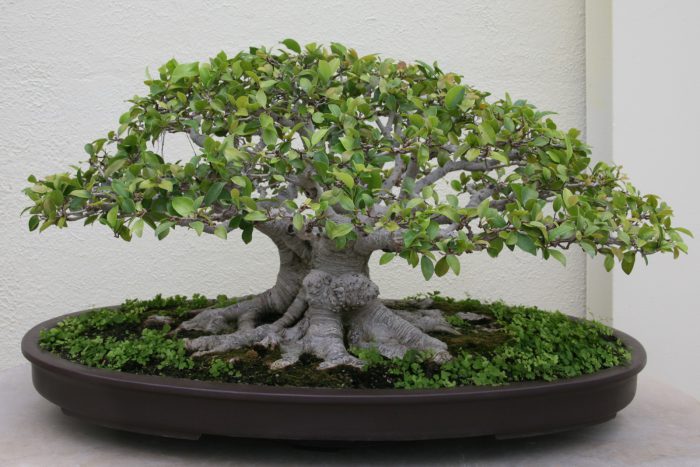
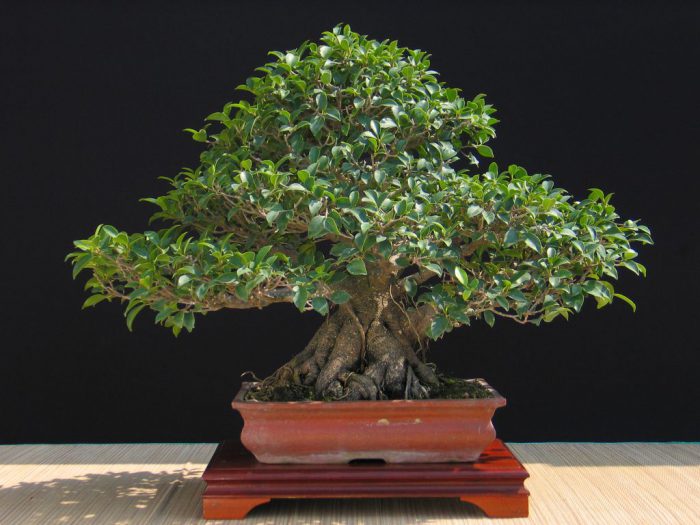
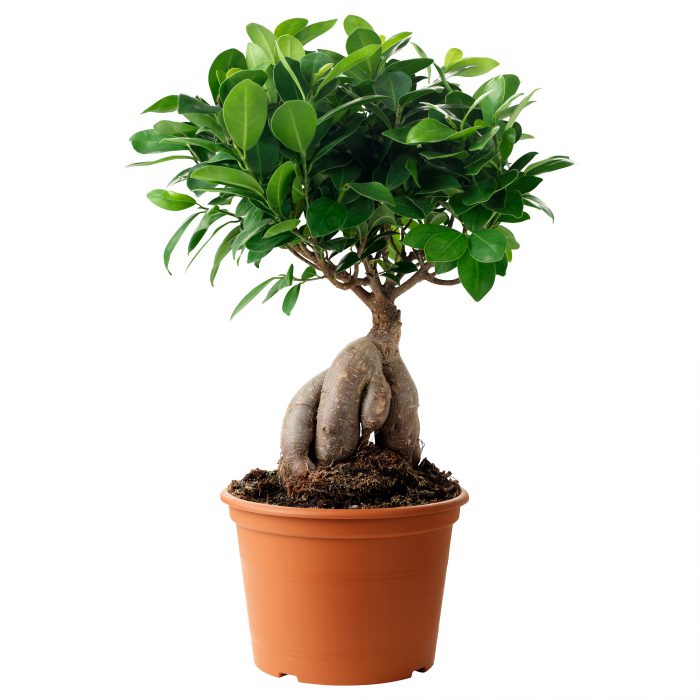
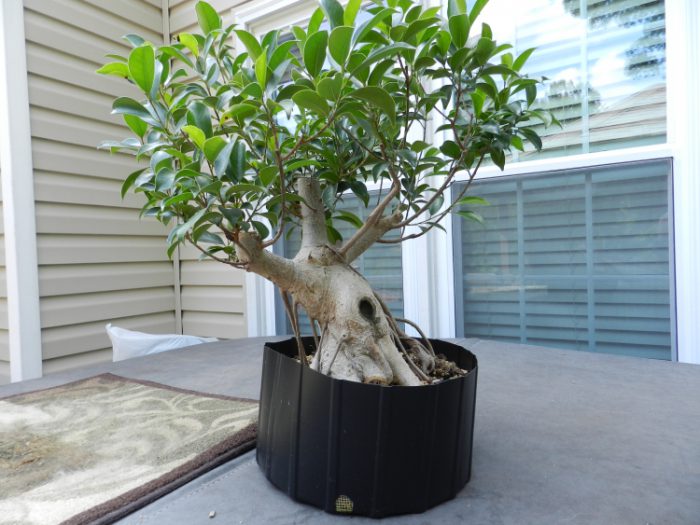
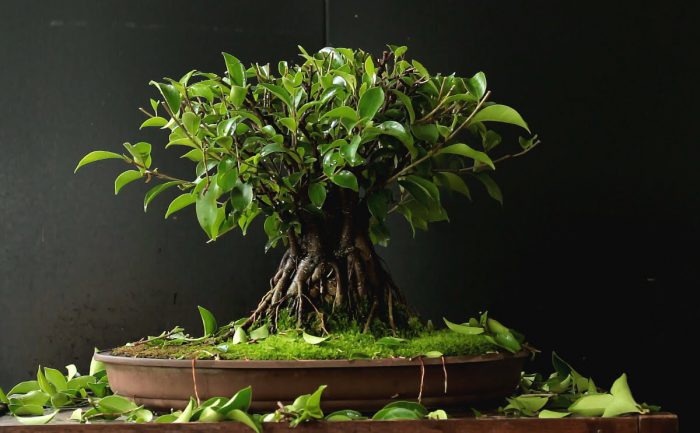
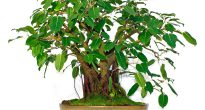
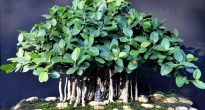
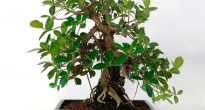
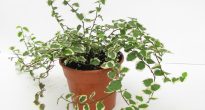






Hello! Tell me what could be with the ficus: yesterday they presented such a microcarp, but 60-70% of the leaves are deformed. Some are bigger, some are smaller - some just have an irregular shape, and some are crooked. What could it be? I have a healthy ficus plant, all the leaves are even. And the new one has either a disease or a pest. Please tell me
(unfortunately, I cannot attach a photo)
Sprinkle with a mixture of vodka and water or a disinfectant containing alcohol. Everything should go away in a few times.